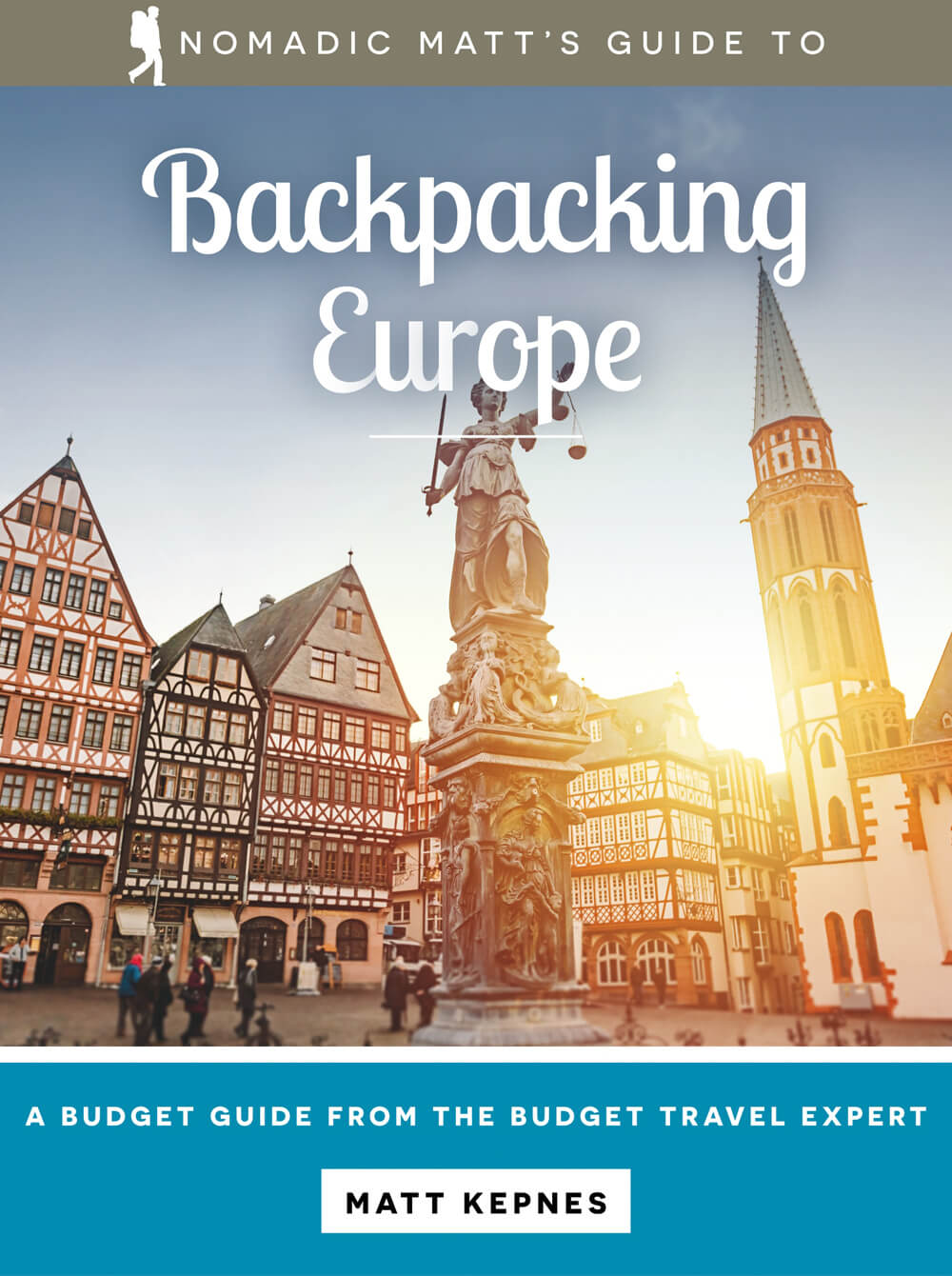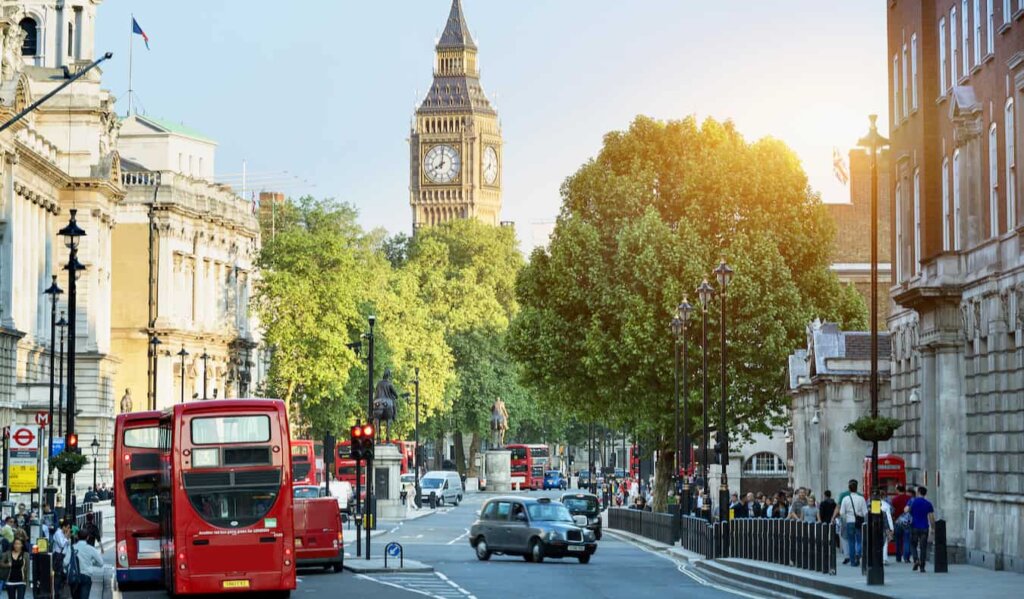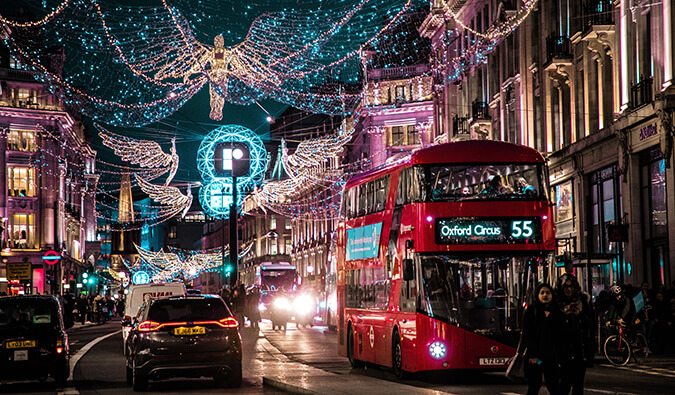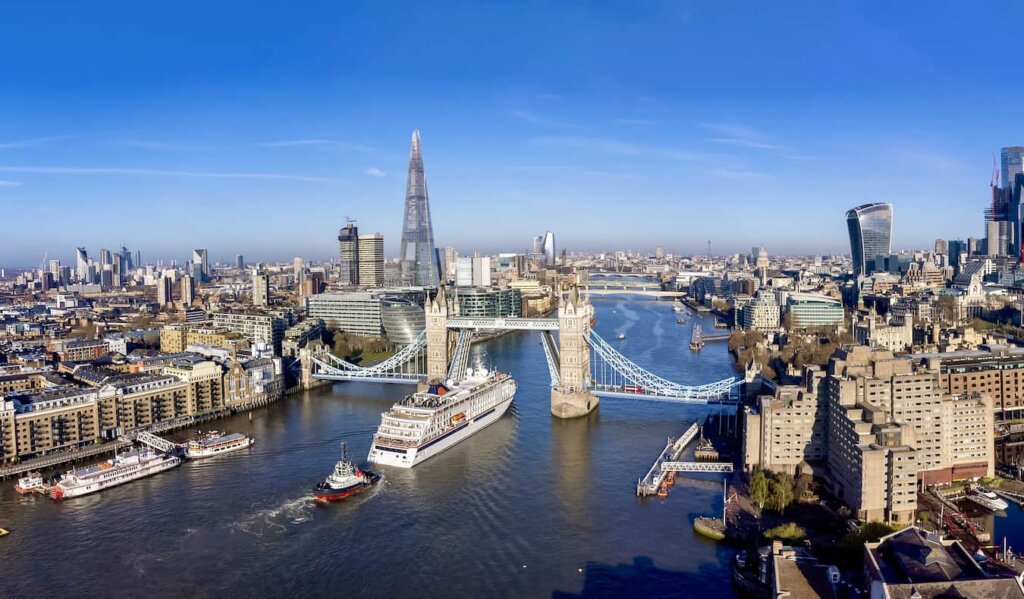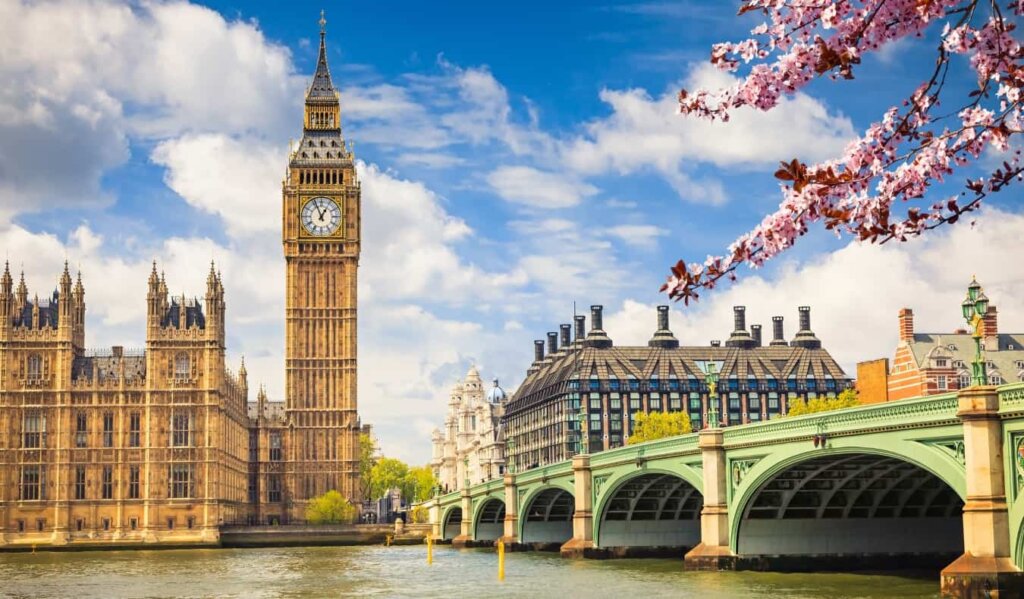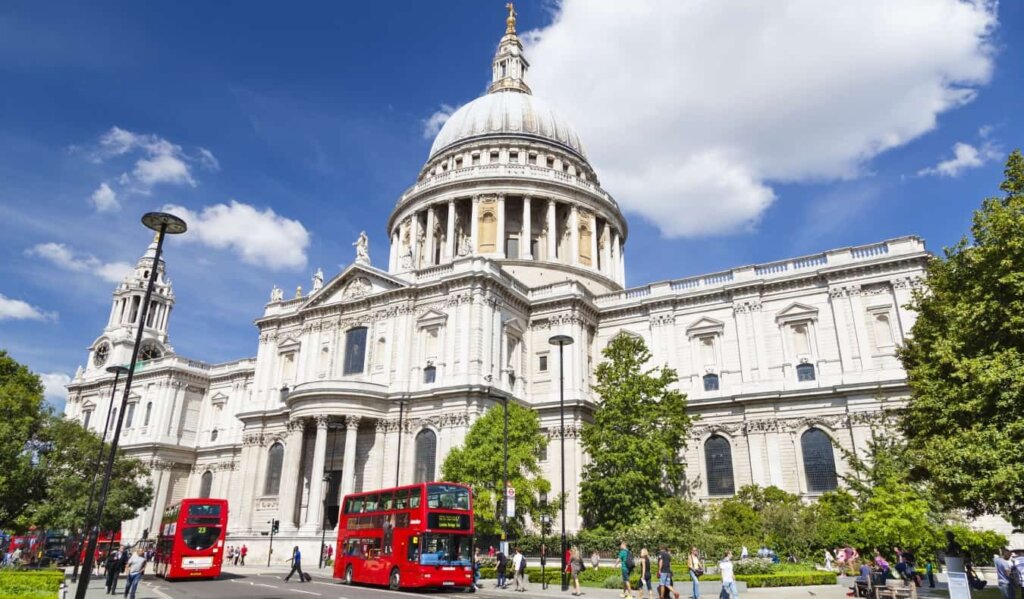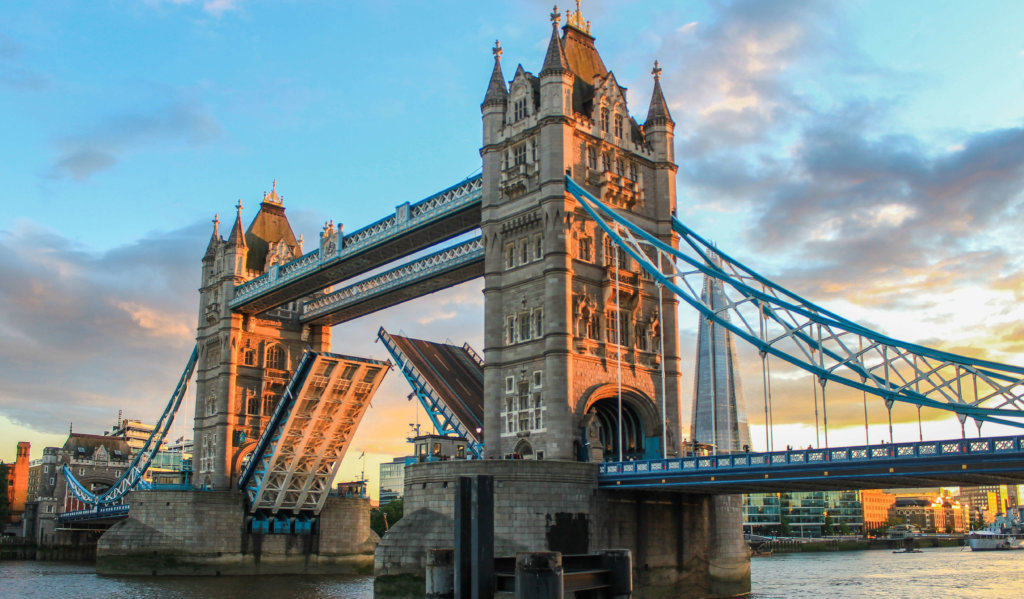London Travel Guide
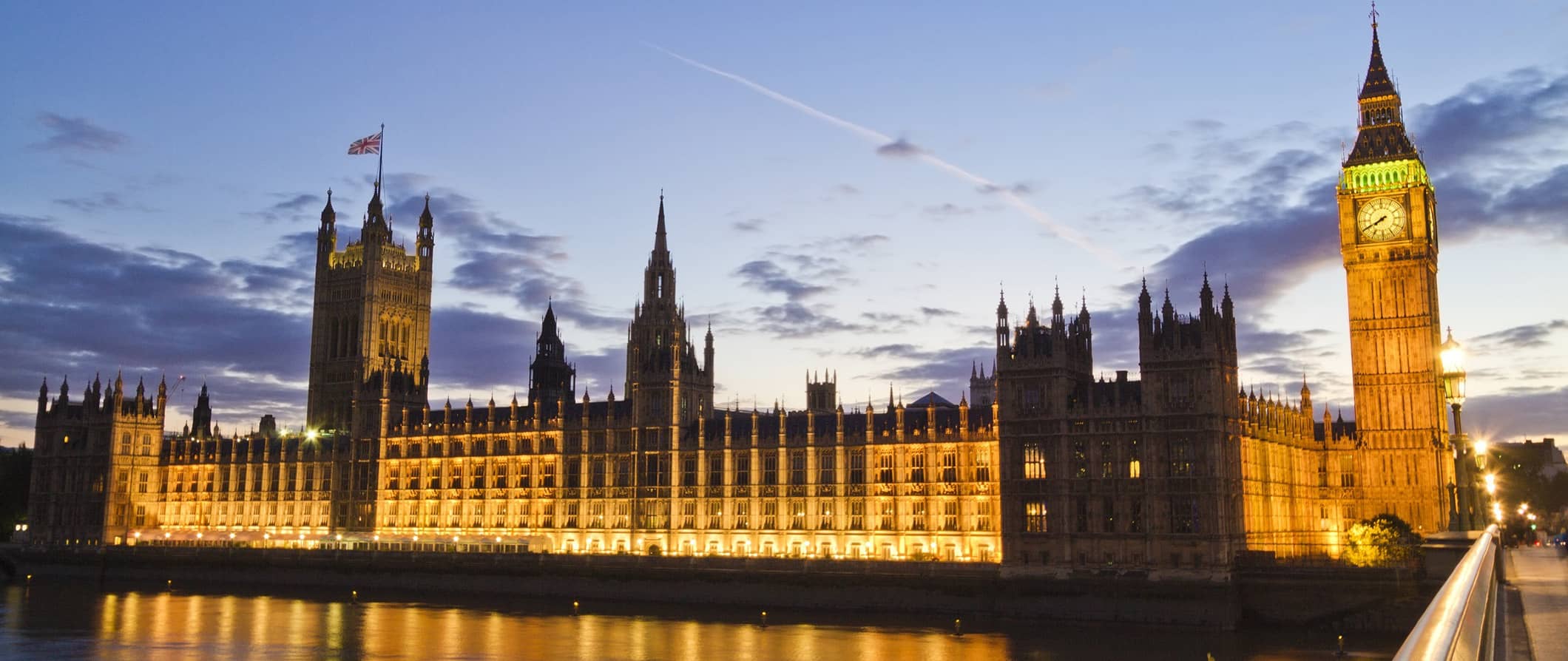
London is one of the most popular cities in the world. It’s home to charming pubs, world-class (and often free) museums, tons of history, some of the best theater performances in the world, a diverse population, incredible food, and a wild nightlife.
I know it’s cliche to say there’s something for everyone but, in this sprawling metropolis, there really is!
I’ve been visiting London since 2008 and, with every subsequent visit, the city has grown on me. The more I go, the more awesome stuff I see, the more I fall in love with it. There’s always something new to do here and there’s an energetic vibe to the city.
Unfortunately, it’s also an expensive destination. A visit here can eat a hole in any budget if you aren’t careful.
Luckily, there are tons of free and cheap things to do in London. While budget travelers need to be frugal here, you can still visit London on a budget and have an amazing time.
This London travel guide can help you plan your trip, save money, and make the most out of your time in this cosmopolitan capital!
Click Here for City Guides
Top 5 Things to See and Do in London
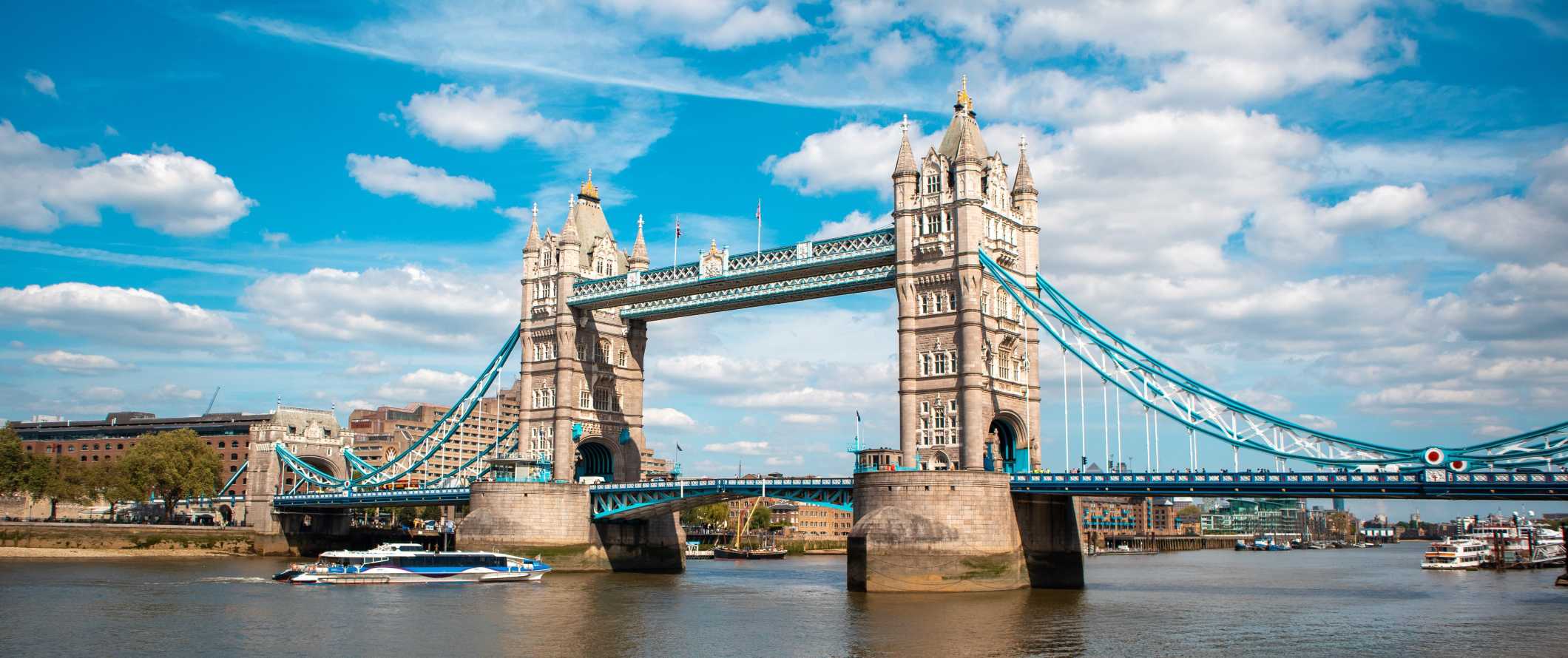
1. Visit Big Ben and the House of Parliament
Although you can’t go up the tower, you can view this Gothic structure from the street and hear its chimes four times an hour. Big Ben is actually the name of the Great Bell of the Great Clock of Westminster which can be found inside Elizabeth Tower at the north end of the Palace of Westminster, but is often used to refer to the clock and the tower as well. To learn about the UK government, take a tour of Parliament, founded in 1801, while you’re here (get there early or reserve tickets online) . Guided tours cost 29 GBP while self-guided multimedia tours are 22.50 GBP. The best view of the tower is from the opposite side of the river on the South Bank, near the London Eye.
2. See the Tower of London and Tower Bridge
Built in 1070, the Tower of London has expanded many times over the years. It was built as a double-leaf bascule bridge in the middle (both sides lift up) to maintain river access to the Pool of London docks while easing congestion on each side of the river. You can visit inside the tower and walk along the glass walkways. Weapons, armor, and coins were made here until 1810 and today you can view the famous crown jewels, walk the battlements, wander recreated medieval palace rooms, see the iconic Yeoman Warders (known as the Beefeaters as they were allowed to eat as much beef as they wanted from King Henry VII’s table), and spot the legendary black ravens that live in the tower. Skip-the-line tickets are 29.90 GBP.
3. Admire Buckingham Palace
Buckingham Palace is only open to the public for 10 weeks during the summer, but you can join the crowds and watch the changing of the guard at 11am every Monday, Wednesday, Friday and Sunday throughout the year (get there in good time to find a good place to stand). Admission to the palace isn’t cheap, with tickets costing 30 GBP online (33 GBP on the day), while exclusive guided tours are 90 GBP. Check the Royal Collection Trust website for details on other events happening throughout the year.
4. See Westminster Abbey
A working royal church, the Gothic Westminster Abbey was founded by Benedictine monks in 960 CE. More than 3,300 people are buried here including 17 monarchs and numerous royal funerals have been held here over the centuries. It’s the traditional coronation site for British monarchs and has been the setting for every coronation since 1066, as well as for many other royal occasions, including 16 weddings. Other famous British figures buried here include Charles Darwin, Sir Isaac Newton, Aphra Behn, and Charles Dickens. Tickets cost 27 GBP, but you can visit for free if you go during a service. Just make sure to dress (and act) appropriately as it is a place of worship.
5. Hang out in Trafalgar Square
Stroll around and admire the fountains and the famous monuments, such as the four bronze lion statues and Nelson’s Column (which honors Admiral Nelson’s victory at the Battle of Trafalgar in 1805). It is bordered on all sides by a number of museums, galleries, cultural spaces and historic buildings so there’s plenty to do as well. Trafalgar Square is also known to be a center of national democracy and protest so peaceful rallies and demonstrations are frequently held (usually at weekends). Even if there aren’t any official events, lots of people still hang out here so it makes for a good place to people-watch.
Other Things to See and Do in London
1. Take a free walking tour
London has tons of different walking tours on offer. From free tours to specialty tours to paid tours to literary tours to quirky tea tours, London has it all. Free London Walking Tours and New Europe Walking Tours are two of my favorite companies to go with when it comes to free tours. They’re the best way to see the sights and learn about the city on a budget. Just remember to tip at the end!
If you’re looking for more in-depth and specific tours, check out Take Walks. They offer affordable tours that go into a lot of detail. And if you’re a Harry Potter fan, Get Your Guide runs an awesome Harry Potter tour around the city for 15 GBP.
2. Go museum hopping
London has more museums than you could see in a single visit, and many of them are free. You can spend days visiting world-class museums like the Tate, the British Museum, the City Museum, the National Gallery, the Historical Museum, and many others — all without spending a penny. One of my favorites is the Natural History Museum, a beautiful Romanesque building that contains over 80 million items, including specimens collected by Charles Darwin. It also has an expansive collection of fossils, making it a fun and educational stop. The Victoria and Albert Museum (named after Queen Victoria and Prince Albert) is another favorite of mine. It’s home to over 2,000 works of art covering over 3,000 years of human history.
3. Grab some food in Borough Market
Established in 1756, London’s Borough Market has something for every foodie. It’s home to some of the best British and international produce and dishes. Come here hungry and leave satisfied. It’s great for people-watching too. The market is open daily but the crowds are terrible on Saturdays so be sure to get there early.
4. Enjoy some theater
London is known for its famous theater scene. Attend a show while you’re here and see some of the incredible performances that make London famous. Tickets can be pretty cheap, and something is playing every night (check out TKTS for discounted tickets to shows in the West End). Otherwise, catch a Shakespeare show at The Globe in South London — tickets range from 5-62 GBP depending on the show and seat you choose.
5. Stroll along Brick Lane
Known for vintage clothing, cheap eats, and art, this East London street is a local favorite. Sunday is the best day to come, as this is when the outdoor street market takes place, though the restaurants and shops lining the street are open daily. Brick Lane has some of the best (and cheapest) food in London, especially when it comes to curry, as this is the hub of London’s Bangladeshi community. This street is also a great place to bring a camera, as its walls are basically a gallery for London’s best street artists, including Banksy, D*Face, and Ben Eine.
6. Ride the London Eye
The London Eye is a 152-meter (500-foot tall) Ferris wheel. While a little cheesy, it’s nevertheless one of the most popular attractions in London. It’s across the street from Parliament and provides excellent views of London and the city’s most iconic buildings, especially on a clear day. Tickets are 32.50 GBP, but if you want to play tourist and take in the view, it might be worth it. The ride lasts 30 minutes and tickets start at 32.50 GBP.
7. Visit the London Dungeon
The London Dungeon calls itself “the world’s most chillingly famous horror attraction.” It covers 2,000 years of London’s gruesome history and is a morbid but interesting museum. Although you can learn about popular torture methods in England, this place has turned into more of an “amusement park” type attraction. But if you like things like escape rooms and scary boat rides, it’s enjoyable. Tickets cost 29 GBP when you book online (32 GBP in person).
8. See St. Paul’s Cathedral
St. Paul’s is a striking English Baroque cathedral with a world-famous dome. Architect Christopher Wren’s masterpiece, the iconic building dates from the 17th century. Inside, you can visit the crypt to see the resting places of famous figures including The Duke of Wellington, Christopher Wren, and Admiral Nelson, or just enjoy the cathedral’s glittering mosaics and elaborate stone carvings. If you don’t mind climbing some stairs, a highlight is to climb to the Stone Gallery or Golden Gallery for panoramic views over surrounding London. Admission costs from 18 GBP when you buy online, which is cheaper than the London Eye and offers similarly breathtaking views.
9. Explore Covent Garden
Covent Garden, a popular West End neighborhood, is a fun place to hang out for an afternoon. It’s home to lots of quirky stalls, busking musicians, an artsy market, and a selection of unusual pubs and coffee shops. Covent Garden is also within walking distance of all the big musical theater shows, so it’s a great place to spend a few hours before catching a performance. Make sure to visit Covent Garden Market, which has been open since the 1830s. It’s a good place to grab a bite to eat or shop at some of the artisan craft stalls. It’s open Monday to Saturday from 8am-6pm, with an outdoor farmer’s market on Saturdays between April and December.
10. Visit Shakespeare’s Globe
An integral part of England’s history, Shakespeare’s Globe is a reconstruction of the original Globe Theatre, the venue for which the famous playwright wrote his plays. It’s a must-see for lovers of Shakespeare, with performances embracing near-perfect replicas of Elizabethan staging practices. You can even sit in front where the groundlings did, for shouting and heckling! The theater is open-roofed, so bundle up in the winter. Tickets cost 5-62 GBP depending on the production and the seat (you can stand just as they did in Elizabethan times). You can also take a guided tour for 17 GBP to learn more about the history of the theater (more specialized ones such as the Ghosts and Ghouls tour or the Pride tour cost 20 GBP).
11. Explore Camden Market
A long-time counter-culture haven, Camden Market is home to over 1,000 independent shops, stalls, cafes, restaurants, bars, buskers, and everything in between. It’s enormously popular and busiest on the weekends (it sees over 250,000 visitors each week). Camden Market is actually a series of six separate markets, so you can literally wander the labyrinth of alleyways for hours and not see it all.
12. See the Royal Observatory
Since its founding in the late 17th century, the Royal Observatory at Greenwich has played an important role in astronomy and navigation. The observatory is divided into two sections, with one half focusing on time while the other half is devoted to astronomy. In the Meridian Courtyard, you can stand on either side of the Prime Meridian, which separates the Earth’s eastern and western hemispheres. The Peter Harrison Planetarium is also housed here, where you can see a show for 10 GBP. The Royal Observatory itself costs 16 GBP.
13. Walk around the Strand
In the 12th century, rich noblemen built elegant homes and gardens along the shore (the strand) of the Thames, making it one of the most prestigious places to live (a fact that remains true to this day). Walk down this thoroughfare and be treated to a grand display of wealth and beauty. It was dubbed “the finest street in Europe” by Prime Minister Benjamin Disraeli in the 19th century. The Strand, which runs from Trafalgar Square to Temple Bar, is home to numerous shops, pubs, landmark buildings, and classic hotels.
14. Drink beer at Ye Olde Cheshire Cheese
This historic pub has been around since the great fire of 1666 (and there has been a pub at this location since 1538). It’s surprisingly large inside, and in the winter, fireplaces keep pub-goers warm. The wood paneling, atmospheric lack of natural lighting, and vaulted cellars make stepping inside feel like stepping back in time. Famous literary figures like Charles Dickens, R.L. Stevenson, Mark Twain, Oliver Goldsmith, and others used to frequent (and write about) this particular pub.
15. See the Churchill War Rooms
Located beneath the Treasury Building in the Whitehall area of Westminster, the Churchill War Rooms include the government’s command center during World War II and a museum about the life of Winston Churchill. The centerpiece of the whole place is an interactive table that enables visitors to access digitized material from the Churchill archives. If you are like me and a huge history nerd, this is one of the best attractions in the city. I highly, highly encourage you to visit. It’s worth the price! Admission is 29 GBP.
16. Relax in Hyde Park and Kensington Gardens
If you’re looking to get away from the hustle and bustle of the city, head to Hyde Park or Kensington Gardens for some reprieve. Both parks, which are (conveniently for the visitor) right next to each other, are designated as Royal Parks of London. Hyde Park is the most famous park in London. Originally the private hunting grounds of Henry VII, it opened to the public in 1637 and is a great place to stroll, picnic, or catch one of the many events that are hosted here throughout the year. Kensington Gardens are home to the Serpentine Galleries as well as Kensington Palace. The park and the gardens cover almost 250 acres!
17. Take a Jack the Ripper tour
Jack the Ripper is one of London’s most infamous killers — and his true identity was never figured out. Every night, there are tons of people in the East End learning about Jack the Ripper on a ridiculous number of similar tours. The tour guides you through dark alleyways, stopping at historic locations connected with the infamous serial killer. Tickets cost 15 GBP.
For more information on specific cities in England, check out these guides:
How to Stay Safe in London
London is a safe city and the risk of violent crime here is low. Scams and pick-pocketing can occur around high-traffic areas, especially around tourist attractions like London Tower and on crowded public transit. Pick-pockets tend to work in teams, so stay alert and be aware of your surroundings. Keep your valuables secure and out of reach at all times just to be safe.
Solo travelers, including solo female travelers, should generally feel safe here, however, the standard precautions apply (never leave your drink unattended at the bar, never walk home alone intoxicated, etc.).
Although there are no super seedy neighborhoods in London, avoid wandering around late at night alone — especially if you’ve had a pint or two. As an extra precaution, only bring the money you need when you go to the bar. Leave the rest of your cards and cash in your accommodation.
Scams here are rare, but if you’re worried about getting ripped off you can read about common travel scams to avoid here.
If you do experience an emergency, dial 999 for assistance.
Thanks to a few high-profile terrorist attacks and riots across Europe (including London), I frequently get emails inquiring whether or not Europe is safe to visit. The short answer: yes! I wrote a whole post about why Europe is safe to visit.
The most important piece of advice I can offer is to purchase good travel insurance. Travel insurance protects you against illness, injury, theft, and cancellations. It’s comprehensive protection in case anything goes wrong. I never go on a trip without it as I’ve had to use it many times in the past. You can use the widget below to find the policy right for you:
Where to Stay in London
While the city may be expensive, its popularity means there are lots of hostels here. I’ve stayed at dozens of hostels over the years. Here are some of my favorites:
For more hostel suggestions be sure to check out my list of the best hostels in London.
And, to find out exactly where in the city you should stay, here’s a post that breakdowns the best neighborhoods in London.
London Travel Costs
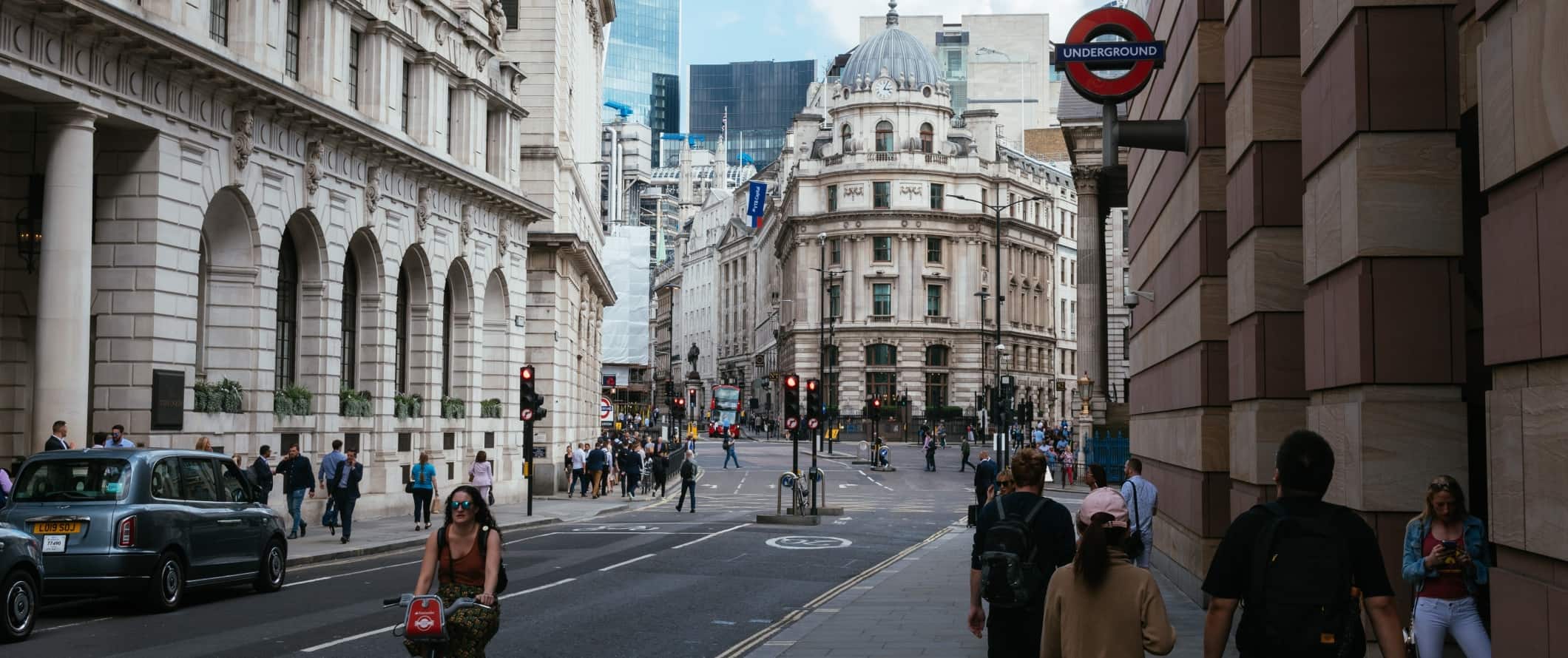
Accommodation
- Hostel dorms – 13-25 GBP per night
- Hostel private rooms – 50-180 GBP per night
- Budget hotels – 70-200 GBP per night
- Airbnb private rooms – 45-100 GBP per night
- Airbnb apartments – 90-150 GBP per night
Food
- Market lunch – 10-15 EUR
- Pre-made sandwiches – 5-9 GBP
- Sit-down restaurants – 14-35 GBP
- Fine dining – 70-100 GBP
- Casual take-out places – 7-12 GBP
- Fast food (think McDonald’s) -13 GBP
- Beer – 6-8 GBP
- Glass of wine – 7-10 GBP
- Cappuccino/latte – 3-4 EUR
- Bottled water – 1-2 EUR
- Groceries for a week – 50-60 GBP
Note: A great way to save money is to get the Taste Card. This diner’s club card offers 50% discounts on tons of restaurants as well as two-for-one specials. It can really pay off, especially on any nice meals you want to have. You can only live on fish and chips for so long!
London Suggested Budgets
Backpacker – 60 GBP Per Day
If you’re backpacking London, this budget covers a hostel dorm, taking public transit, cooking all your meals, limiting your drinking, and sticking to free activities like parks, free walking tours, and museums. If you plan on drinking, add another 10 GBP to your daily budget.
Midrange – 150 GBP Per Day
A mid-range budget covers staying in a private Airbnb or hostel room. You’ll be able to eat out for most meals, have a drink or two at the pub, take public transit and the occasional taxi, and do some paid activities such as Tower Bridge or Westminster Abbey.
Upscale – 300 GBP Per Day
On a “luxury” budget, you can stay in a hotel, eat out anywhere you want, drink more, take more taxis, and do whatever activities and tours you want. This is just the ground floor for luxury, though. the sky is the limit!
London Travel Guide: Money-Saving Tips
London is one of the most expensive cities in the world. But thanks to its free museums, cheap pubs, and numerous hostels, there are a lot of ways to cut your costs and save money here. Here are my top tips for saving money in London:
Bring a water bottle – The tap water here is safe to drink so bring a reusable water bottle to save money and reduce your plastic use. LifeStraw is my go-to brand as their bottles have built-in filters to ensure your water is always clean and safe.
Visit all the free museums – Most of the museums in London are free, including the Museum of London, the British Museum, the Natural History Museum, and the Science Museum. The National Gallery and the Tate Modern are also free and are two of my favorites.
Buy an Oyster Card – This prepaid transit card saves you about 50% on each tube, bus and tram ride. If you plan on using the tube a lot, get this card! You can get a refund for the balance left on the card at the end of your trip. If you aren’t charged international transaction fees and have a contactless credit or debit card, you can also use this for travel and the system automatically caps your travel so you never pay more than you would have if you had bought a travel card. Just make sure to tap in and out and the beginning and end of each ride to make sure you’re charged the right fare.
People watch at the markets – Sunday is market day in London, with Camden Market, the Portobello Market, the Flower Market, being some of the more popular options. People watch, snap some photos, and enjoy local London life without spending a dime.
Watch the changing of the guards – Both the changing of the guard at Buckingham Palace (4 times a week) and the changing of the horse guards (daily) at Whitehall take place at 11am (10am at Whitehall on Sundays). Take in true British flare with these interesting and free ceremonies.
Just walk and explore – London is a huge city and beautiful, historic buildings abound. I once walked for four hours and barely made a dent in the route I was going to take (hence the need to get the Oyster Card.) However, once you get out of the tourist area around the Thames, you get to see London the way the locals do. You can pick up free maps of showing walking routes around the capital from any of London’s tourist information shops.
Snag last-minute theater tickets – You can get last-minute tickets to the theater from the official booth in Leicester Square. Availability varies every day, so be sure to get there early. And if you don’t want to shell out a lot of money to see The Lion King or Les Misérables, check out smaller shows and comedy nights at theaters like Leicester Square Theater, where prices start at about 17 GBP.
Skip the cabs – Taxis are incredibly expensive in London and can destroy your budget. I stayed out past when the tube closed one night and the taxi to my hotel was 31 GBP! If you start taking taxis everywhere, you’ll end up spending hundreds of dollars per day, so keep this in mind.
Master the night bus – In London, the tube closes around 12:30am (the Central, Jubilee, Northern, Piccadilly, and Victoria lines do run all night on Friday and Saturday nights). To avoid taking expensive taxis, make sure you get a map of the night bus routes so you can get back to your hotel/hostel on the cheap. These buses go all over the city and into the suburbs.
Take a free walking tour – London, like most big cities in Europe, has a wide array of free walking tours given throughout the city. For a historical view of the city, try New Europe, and for off-the-beaten-path tours, try Free Tours by Foot.
Get the Taste Card – This diner’s club card offers 50% discounts on thousands of restaurants as well as two-for-one specials. It can really pay off, especially on any nice meals you want to have.
Get the London Pass – If you get the London Pass, you can enjoy access to over 80 London attractions, including the Tower of London, Westminster Abbey, and St. Paul’s Cathedral. A one-day pass is 89 GBP, a two-day pass is 115 GBP, and a three-day pass is 135 GBP. You can get all the way up to a ten-day pass for 199 GBP although they often have deals on giving discounts to this. This pass makes for good savings if you’re planning on doing a ton of sightseeing! Other passes available include the London City Pass from Turbopass which includes an option to add transport costs, and the London Sightseeing Pass.
How to Get Around in London
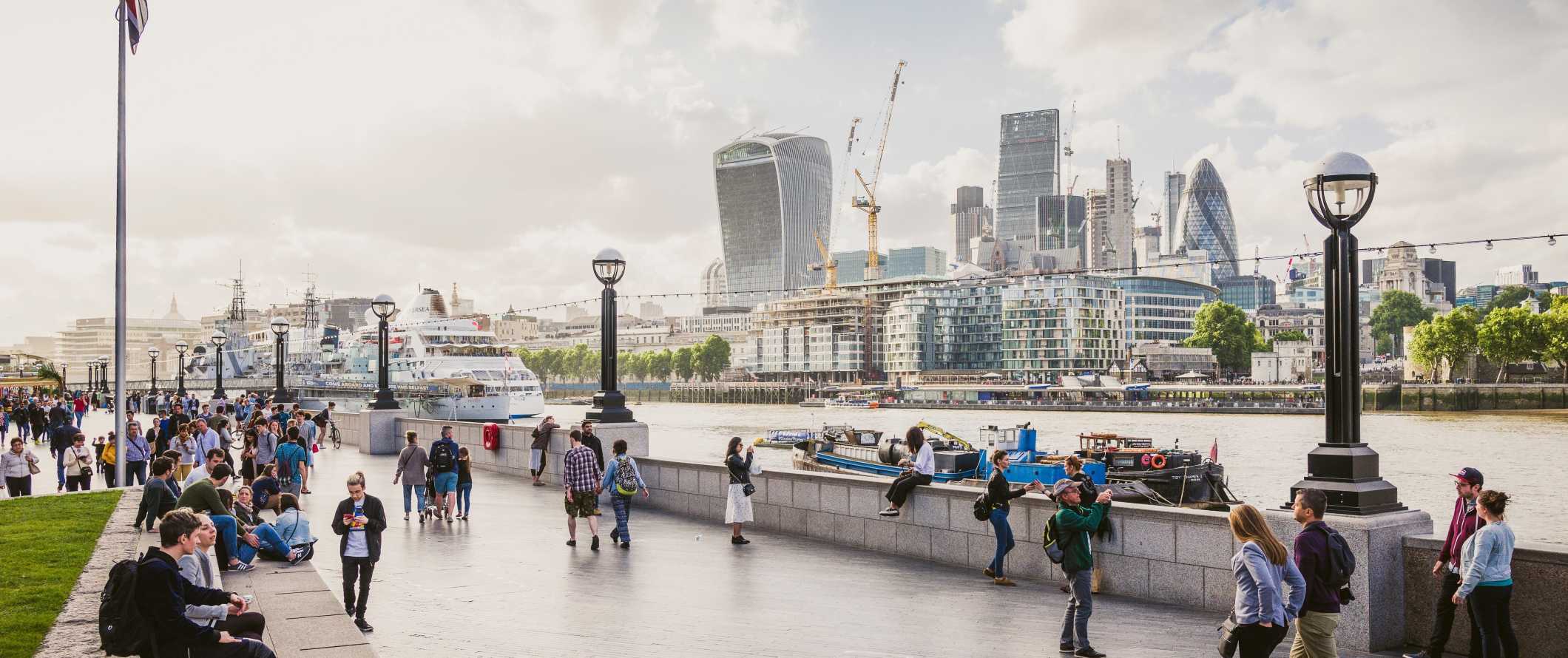
Public transportation – London has excellent public transportation and is the cheapest way to get around. A one-way fare on the tube in Zone 1 costs 6.30 GBP, but getting a Visitor Oyster Card reduces tariffs to 2.50 GBP per ride. No matter how many trips you take per day, your Oyster Card caps your travel at 7.70 GBP for travel in Zones 1 and 2. This is applicable across all public transit, including buses and trams, saving you a ton of money.
The Visitor Oyster Card costs 5 GBP, and then you choose how much credit to add to your card. Remember that you can get back any remaining balance at the end of your trip.
The bus system in London also uses the Oyster Card and costs 1.65 GBP per ride. However, a day of unlimited bus- and tram-only travel costs a maximum of 4.95 GBP. Buses do not accept cash; you must use either an Oyster card, a Travelcard, or your own contactless payment card.
The tram system in London works the same way as the bus system, with rides costing the same.
Bicycle – London’s public bike-sharing program is Santander Cycles. With 750 docking stations and 11,500 bikes, they’re available all over the city. Renting a bike costs 1.65 GBP for up to half an hour and 1.65 GBP for each additional 30 minutes, though you can always dock a bike and take out another one to restart the free timer.
Keep in mind, however, that London isn’t a super bike-friendly city, especially if you’re used to biking with cars driving on the other side of the road!
Taxis – Taxis are readily available, with prices starting at 3.80 GBP and going up around 3 GBP per mile (the tariff is more expensive at night). Given how expensive they are, I wouldn’t take one unless absolutely necessary.
Ridesharing – Uber is available in London but it still costs an arm and a leg if you use it a lot. Stick to public transportation.
Car rental – Cars can be rented for 20-30 GBP per day for a multi-day rental. However, traffic is terrible in the city so I wouldn’t rent a car here unless you are heading out on some day trips. Remember that driving is on the left and that most cars have manual transmissions. There’s also a 15 GBP daily Congestion Charge for driving in the center (7am-6pm Mon-Fri and noon-6pm Sat/Sun/public holidays) and parking is expensive too. Drivers need to be 21 to rent a car as well.
For the best car rental prices, use Discover Cars.
When to Go to London
London doesn’t get too cold, but it’s notoriously foggy and rainy. Summer is peak tourism season, and temperatures are the warmest during this time — but rarely are they ever above 30°C (86°F ). London is bursting at the seams during the summer, but the city has a fun, lively atmosphere. People make the most of the warm weather and there are constantly tons of events and festivals happening.
Spring (late March-June) and autumn (September-October) are also fantastic times to visit, as temperatures are mild and the city isn’t as packed.
Winter lasts from December to February, and tourism crowds thin out dramatically during this time. Temperatures can dip below 5°C (41°F), and prices are slightly lower as well. Expect grey weather and be sure to dress warmly.
Since it is frequently rainy here, pack a light rain jacket or an umbrella no matter when you visit.
London Travel Guide: The Best Booking Resources
These are my favorite companies to use when I travel. They consistently have the best deals, offer world-class customer service and great value, and overall, are better than their competitors. They are the companies I use the most and are always the starting point in my search for travel deals.
- Skyscanner – Skyscanner is my favorite flight search engine. They search small websites and budget airlines that larger search sites tend to miss. They are hands down the number one place to start.
- Hostelworld – This is the best hostel accommodation site out there with the largest inventory, best search interface, and widest availability.
- Booking.com – The best all around booking site that constantly provides the cheapest and lowest rates. They have the widest selection of budget accommodation. In all my tests, they’ve always had the cheapest rates out of all the booking websites.
- HostelPass – This new card gives you up to 20% off hostels throughout Europe. It’s a great way to save money. They’re constantly adding new hostels too. I’ve always wanted something like this and glad it finallt exists.
- Get Your Guide – Get Your Guide is a huge online marketplace for tours and excursions. They have tons of tour options available in cities all around the world, including everything from cooking classes, walking tours, street art lessons, and more!
- The Man in Seat 61 – This website is the ultimate guide to train travel anywhere in the world. They have the most comprehensive information on routes, times, prices, and train conditions. If you are planning a long train journey or some epic train trip, consult this site.
- Trainline – When you’re ready to book your train tickets, use this site. It streamlines the process of booking trains around Europe.
- Rome2Rio – This website allows you to see how to get from point A to point B the best and cheapest way possible. It will give you all the bus, train, plane, or boat routes that can get you there as well as how much they cost.
- FlixBus – Flixbus has routes between 20 European countries with prices starting as low 5 EUR! Their buses include WiFi, electrical outlets, a free checked bag.
- SafetyWing – Safety Wing offers convenient and affordable plans tailored to digital nomads and long-term travelers. They have cheap monthly plans, great customer service, and an easy-to-use claims process that makes it perfect for those on the road.
- LifeStraw – My go-to company for reusable water bottles with built-in filters so you can ensure your drinking water is always clean and safe.
- Unbound Merino – They make lightweight, durable, easy-to-clean travel clothing.
- Top Travel Credit Cards – Points are the best way to cut down travel expenses. Here’s my favorite point earning credit cards so you can get free travel!
- Fat Tire Tours – For bike tours, use this company! They have fun, interactive tours led by expert local guides. You’ll get to see all the main sights without breaking the bank!
- BlaBlaCar – BlaBlaCar is a ridesharing website that lets you share rides with vetted local drivers by pitching in for gas. You simply request a seat, they approve, and off you go! It’s a cheaper and more interesting way to travel than by bus or train!
- Take Walks – This walking tour company provides inside access to attractions and places you can’t get elsewhere. Their guides rock and they have some of the best and most insightful tours in all of England.
GO DEEPER: Nomadic Matt’s In-Depth Budget Guide to Europe!
There’s a lot of free information online but do you want to spend days searching for information? Prob not! That’s why guidebooks exist.
While I have a lot of free tips on Europe, I also wrote an entire book that goes into great detail on everything you need to plan a trip here on a budget! You’ll get suggested itineraries, budgets, even more ways to save money, my favorite restaurants, prices, practical information (i.e. phone numbers, websites, prices, safety advice, etc etc), and cultural tips.
I’ll give the insider view of Europe that I got from years of traveling and living here! The downloadable guide can be used on your Kindle, iPad, phone, or computer so you can have it with you when you go.
Click here to learn more about my book on Europe!
London Travel Guide: Related Articles
Want more tips for your trip? Check out all the articles I’ve written on London travel and continue planning your trip:

